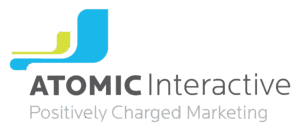The digital marketplace continues to evolve, and web development is at the center of this transformation. For Ohio businesses, a modern website is more than just an online presence—it is a vital tool for customer engagement, sales, and growth. From responsive design to accessibility and advanced tools, staying updated with modern web development trends Ohio businesses can make the difference between leading the market and falling behind.
This article explores the key trends shaping 2025, offers practical best practices, and explains how small companies can adopt the right web development tools in Ohio USA.
Why Staying Current Matters
Consumers expect speed, accessibility, and flawless digital experiences. According to Statista (2024), over 60% of global web traffic now comes from mobile devices, while Google reports that sites loading in under three seconds see much lower bounce rates. If Ohio companies fail to keep up, they risk losing customers to competitors with modern, responsive, and accessible websites.
The question many leaders are asking is: “What web development trends should Ohio businesses adopt in 2025?” The answer lies in combining cutting-edge technology with user-first design.
Responsive and Accessible Design
Responsive design is no longer optional—it is the baseline. But beyond adjusting to different screen sizes, businesses must also focus on accessibility. The WebAIM Million Report (2024) found that 96% of homepages still had WCAG 2 accessibility failures, highlighting the gap between legal requirements and user needs.
For companies in Columbus, Dayton, and across Ohio, responsive and accessible web dev best practices Columbus include:
-
Designing for mobile-first experiences
-
Using proper color contrast and text alternatives for images
-
Ensuring keyboard navigation for users with disabilities
-
Regular testing with accessibility audit tools
Investing in accessibility not only ensures compliance with the Americans with Disabilities Act (ADA) but also opens your site to a wider audience.
Performance and Core Web Vitals
Google’s Core Web Vitals remain a ranking factor, emphasizing user experience through speed, interactivity, and stability. Pages that load faster and respond smoothly gain better visibility in search.
Ohio businesses should prioritize:
-
Lightweight code and optimized images
-
Content Delivery Networks (CDNs) for faster load times
-
Monitoring site performance with tools like PageSpeed Insights
A website that performs well earns trust and encourages users to stay longer, improving conversion rates.
Security and Data Privacy
With increasing cyber threats, web security is no longer a technical afterthought. The 2024 IBM Cost of a Data Breach Report found the average data breach cost U.S. companies $9.5 million, underscoring the financial and reputational risks of neglecting security.
For small businesses, implementing SSL certificates, secure hosting, and regular software updates can dramatically reduce risks. Agencies should also integrate privacy compliance features, such as cookie consent banners, to meet U.S. and international regulations.
AI-Powered Features and Personalization
Artificial intelligence is transforming web experiences by enabling personalization, chatbots, and predictive analytics. For example:
-
AI chat assistants to provide real-time customer support
-
Personalized content delivery based on browsing behavior
-
Predictive analytics to anticipate customer needs
For Ohio companies, adopting AI features improves customer satisfaction and efficiency while keeping marketing competitive.
Tools for Small Businesses
For smaller companies, choosing the right tools can be overwhelming. Many ask, “Which web dev tools help small Ohio companies?” The answer depends on business goals, but some reliable options include:
-
WordPress with modern themes for affordable flexibility
-
Shopify for e-commerce with built-in SEO features
-
Webflow for design-focused businesses
-
Google Analytics 4 for insights into customer behavior
The right mix of tools balances functionality with cost-effectiveness, giving small businesses the ability to scale without overspending.
Building Quality Culture in Web Development
A forward-looking web strategy requires more than adopting new tools. It involves creating a culture of continuous improvement where teams are trained, processes are documented, and best practices are followed consistently.
This means:
-
Regularly auditing sites for performance, SEO, and accessibility
-
Documenting development processes for consistency
-
Investing in staff training to keep skills current
Ohio companies that adopt a quality-first approach ensure their websites remain competitive and future-ready.
How to Make My Website Accessible and Responsive in the Ohio Market?
For local businesses, this often starts with evaluating your current website:
-
Test responsiveness on multiple devices.
-
Run accessibility scans and address flagged issues.
-
Implement local SEO to capture Ohio-based search traffic.
-
Work with a partner who understands regional needs and user expectations.
By combining responsive design with accessibility, businesses can create inclusive experiences that also rank well on search engines.
Web development is evolving quickly, and Ohio businesses must adapt to stay competitive. From responsive and accessible web dev best practices Columbus to adopting small business web development tools in Ohio USA, the key is balancing modern trends with user needs and long-term goals.
Atomic Interactive specializes in guiding businesses through these changes, building responsive, accessible, and high-performing websites designed to deliver measurable results.
Contact us to get started on creating a modern web presence that keeps your Ohio business ahead in 2025.






